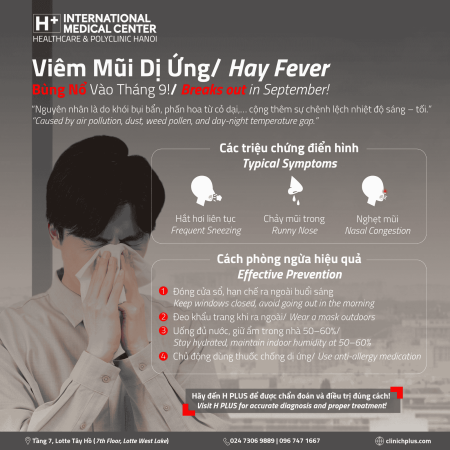Why does allergic rhinitis surge in September?
According to the latest statistics, dirty air and pollen from weeds are among the main causes. Though difficult to see, they float in the air in large quantities, triggering allergic reactions. In addition, the temperature difference between morning and evening also worsens symptoms.
Unlike in spring, fall allergic rhinitis has a distinct characteristic: symptoms are most severe from 8 AM to 10 AM, the time when pollen spreads most strongly, and then almost disappear as the allergens dissipate.
Therefore, patients often experience severe sneezing, runny nose, and nasal congestion when:
- opening windows in the morning,
- going to work or exercising early,
- playing golf in the fall.
Easily mistaken for a common cold
Because of many similar symptoms, fall allergic rhinitis is often confused with the common cold. This leads to delayed diagnosis and treatment, which can cause adverse consequences.
Risks of not treating promptly
If allergic rhinitis is not treated in time, the condition can progress to chronic rhinitis, causing insomnia, reduced sense of smell, headaches, and affecting a person’s studies or work. Furthermore, allergic rhinitis can lead to secondary infections such as bronchial asthma, sinusitis, and otitis media.
In children and adolescents, the incidence rate is high. Frequent recurrence can cause sleep disorders, reduced concentration, poor academic performance, and frequent school absences.
How to prevent fall allergic rhinitis
Avoid pollen exposure: keep windows closed, reduce outdoor activities, and wear a face mask when going outside.
Drink enough water and keep indoor air humidity at 50–60%.
Proactively take anti-allergy medication 2–3 weeks before the season begins (as prescribed by a doctor).
👉 Recommendation from H PLUS: Don’t be complacent about prolonged sneezing or a runny nose in the fall. If symptoms are recurrent, seek early medical attention to avoid complications and get proper treatment advice.
 +84 24-7306-9889
+84 24-7306-9889  Booking
Booking 



